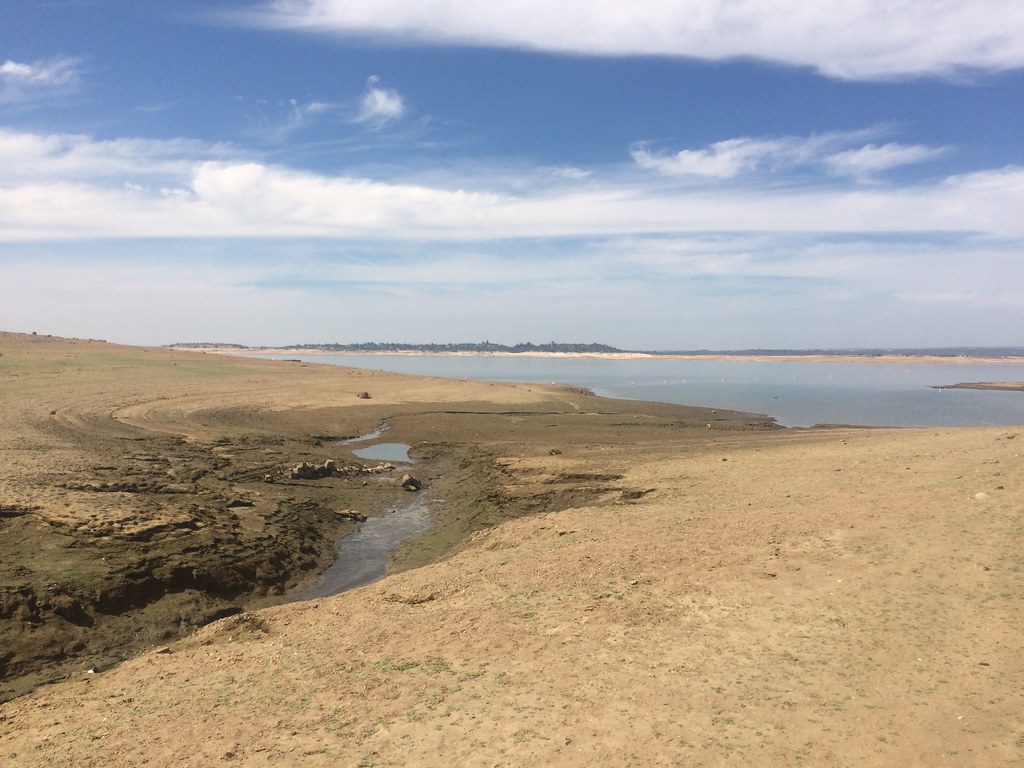Monday August 19, 2019

Drought is a frightening word for any creature that lives in water. Aquatic animals in regions like California that have historically experienced frequent droughts have evolved remarkable adaptations to dealing with dry conditions. However, the duration, severity, and frequency of droughts are all increasing as a result of ongoing climate change and an increased human demand for water, leaving even drought-hardened species struggling in the face of an uncertain and shifting future. Because of their ecological and economic importance, understanding how fish and fisheries respond to changing drought patterns will be pivotal for determining the best management options and solutions to address water scarcity. To this end, a publication earlier this year in the journal Reviews in Fish Biology and Fisheries sought to answer several key questions about how fish will be affected by drought (Lennox et al. 2019). The researchers focused on the role of habitat, features that make fish drought tolerant, how aquatic communities recover from drought, how fisheries are affected, and how climate change will affect all of these patterns. They also highlighted gaps in the current scientific understanding of these factors, and made suggestions for avenues of future research in the face of increasing drought.
Since fish are an incredibly diverse group, it’s unsurprising that they are affected by drought in diverse ways. For all fish living in streams, however, having access to the right habitat is truly a matter of life and death. Decreased flows during a drought often reduce the variety of available stream habitats – shallow riffles may disappear, pools may become disconnected, and entire reaches may dry up. Less flow also means warmer water and less dissolved oxygen, a lethal combination for cold-water fish like salmonids. Of course, not all streams will be affected in the same way, and large systems are generally more resistant to the effects of drought than small ones. Certain habitat types may serve as a refuge for fish during a drought, such as deep pools or spring-fed stream reaches, but there is rarely enough refuge habitat to support an entire fish population. In fact, fish may experience increased competition, predation, and disease as they are forced into smaller areas and density increases. Moreover, what makes a good refuge habitat for one species may put another at a competitive disadvantage, like a riffle-adapted fish forced into a deep, stagnant pool. Furthermore, fish often require different habitats at different times of their lives (such as spawning), and refuge habitats are unlikely to provide all habitat types necessary for the completion of a life cycle.
Many species that evolved in arid regions have the adaptations necessary to survive a drought, but even they may suffer negative consequences, like decreased growth rate or increased predation. Recolonization following a drought may be slow for sedentary species that have few offspring, or rapid for species that are more mobile and have many offspring. However, recolonization has been made more difficult for all species by the presence of dams that prevent in-stream fish movement. In short, the relationships between fish, aquatic habitats, and drought are quite complex, and it’s difficult to make generalizations about the effects a drought will have. Beyond conservation concerns, drought also has the potential to affect important fisheries, as low river flows can lead to declines in catch in many systems. Addressing fisheries impacts may require a precautionary approach to management and focused research to better understand the effects of shifting hydrological patterns.
Given the projected increase in drought severity and frequency, learning more about the physical and behavioral responses of fishes to drought will be essential to generate realistic plans for management and restoration. The authors of this review suggest that long-term monitoring will be key to such understanding, noting that fish communities are dynamic entities, and studying how they change in response to changing environments will help identify species most at risk, and which management actions might be most effective. They also suggest that habitat protection and restoration will be essential, as undisturbed and restored habitats will be more resistant to the effects of drought. For example, floodplain restoration efforts in Central California appear to have created sufficient habitat for native Sacramento splittail (Pogonichthys macrolepidotus) to spawn even during drought. Because drought has social, economic, and ecological effects, the authors posit that biological studies will only be one piece of a larger puzzle, and must be integrated with the knowledge of diverse stakeholders in order to work together towards better management.
This post was featured in our weekly e-newsletter, the Fish Report. You can subscribe to the Fish Report here.
